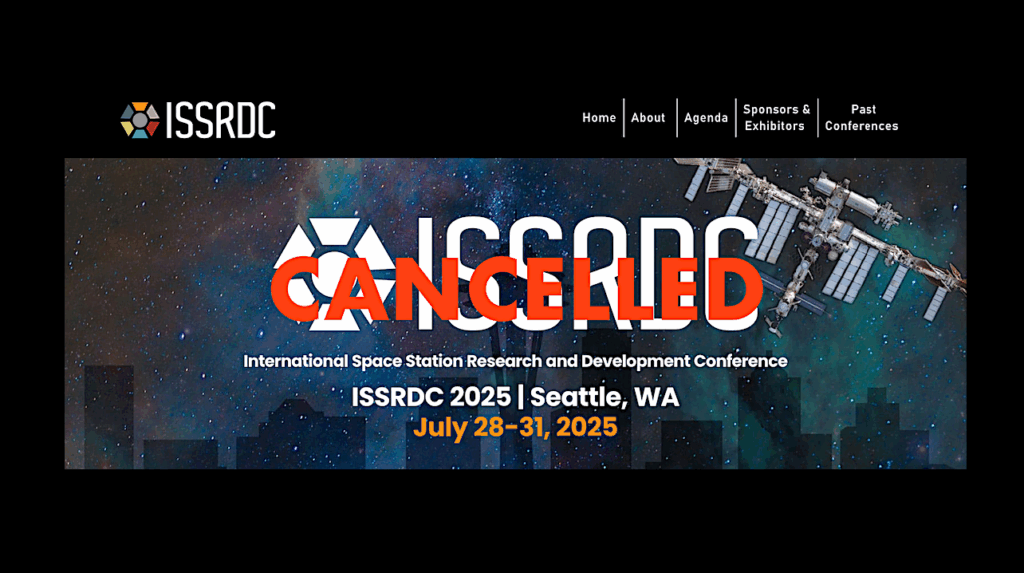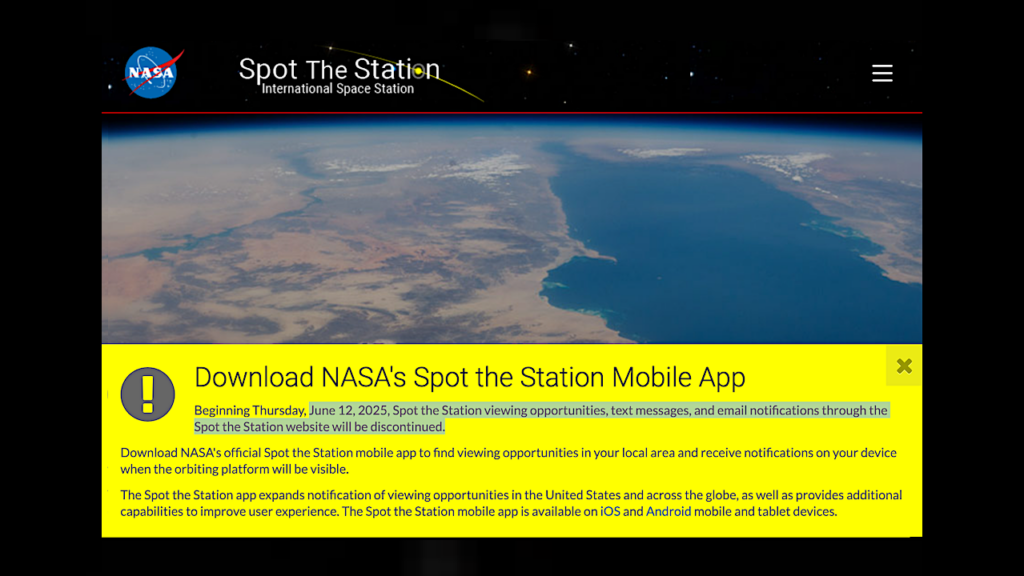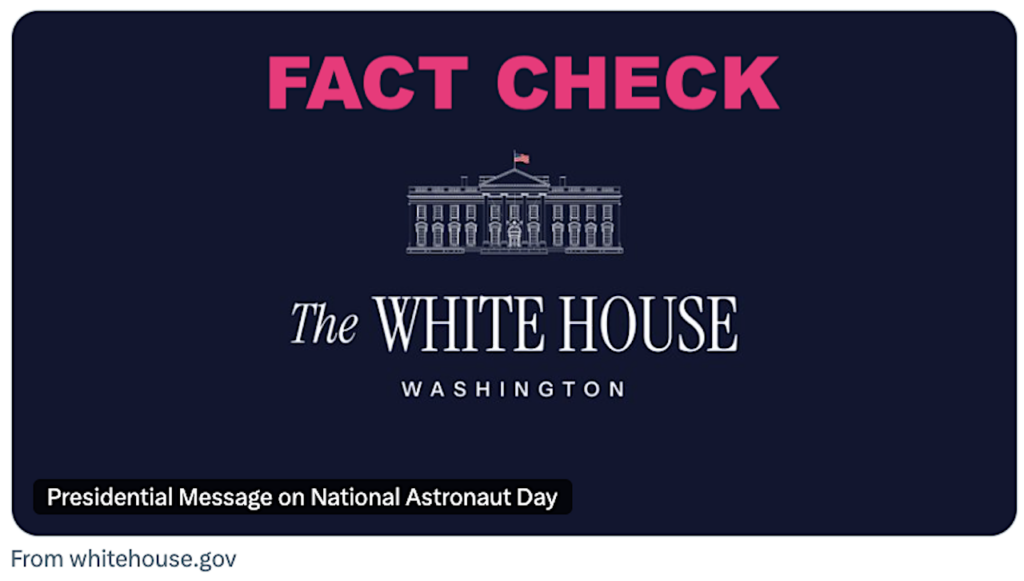Ruexit For ISS?

Russia’s Plan To Spin Off a New Space Station From the ISS, Popular Mechanics
“According to RKK Energia, the prime Russian contractor on the ISS, the new outpost would begin with the separation of the Nauka from the rest of the old station in mid-2020s. By that time, Nauka should have two even newer modules in tow. One would be the so-called Node Module, a tinker-toy-like component that could connect to six other modules, crew ships, cargo tankers, structural elements, you name it. The Node Module is already in RKK Energia’s garage and ready to go within a few months after the Nauka. Next would be the new Science and Power Module (NEM) which, as it name implies, will finally give cosmonauts a state-of-the-art science lab and a pair of large solar arrays, making the Russian segment fully independent from the rest of the ISS in terms of power, communications, and other resources.”








Nauka: Making the SLS schedule performance look good.
Russians routinely announce “plans” and then go looking for interest and funding and approval, and when none is forthcoming, they go back to the drawing board and after a year trot out new “plans.”
Over and over.
Spot on! At this point it’s like… Yeah Right!
NASA does the same. Where is the “plan” for using SLS?
It’s a little different. We plan things, ask for approval, and when it doesn’t come, retool.
Russians ANNOUNCE things, then ask for approval, and half the time when they go to retool they come up with something wildly different than the last plan.
ARM was an announcement of a mission for SLS which was not well received by Congress.
Journey to Mars, for me anyway, is a continuous announcement of what NASA intends to do with SLS/Orion. But there is zero funding for the bits actually *required* to actually get to Mars (beyond some minimal funding to study some sort of HAB module). No actual Mars Lander has been funded. So the “Journey to Mars” stream of announcements rings hollow.
SLS, in reality, is a launch vehicle to nowhere. NASA has *no* idea what missions Congress will actually fund for the thing.
I’m not arguing that we do things better. I’m simply pointing out that the Russians routinely announce things, and our media report it as “the Russians are going to…” when in fact what the Russians are ACTUALLY doing is floating out a sales pitch.
If anything, their way is better, because they toss out their sales pitch, it’s usually rejected, and they don’t waste any funding building something only to scrap or modify it later.
My gripe is not with the Russians, it’s with western reporting. They’ve had 20+ years now to catch on to the fact that no, the Russians are NOT “going to…” they are throwing out a sales pitch to see if anyone bites.
Agreed. US media seems to consistently report these Russian “trial balloon” like proposals as if they are somehow actual funded plans. And they make the same mistake with NASA too since NASA’s “Journey to Mars” is clearly more hype than plan, let alone a funded plan.
Are you sure it was at Space Ops 2010? I looked and searched through the archive and didn’t find it.
I remember that presentation as well. It was part of one of the keynotes, not in a technical session.
That’s not new news. I’ve read articles before saying that the Russians want to re-purpose their parts of the ISS after it ends its mission to build into a new space station.
More like RUminating than RUexit, IMHO.
I’ll believe it when I see it. These Russian modules have been plagued with delays for years.
However, if they can complete these “core” modules before the ISS program ends, then it would make sense to separate them from ISS and use them as the foundation for a new space station since they will still be relatively new. In other words, turning their huge disadvantage (Russian modules not being launched until the very end of life of ISS) into an advantage (new Russian space station).
And they’re going to do this despite savaging the Russian Space Budget through 2025? Somehow I rather doubt it.
There needs to be a website that tracks all the new programs and vehicles Russia announces and forgets about. My personal favorite was when their “space dock” a few years back used Star Trek CG to illustrate what they meant.
While the Russians need, and are getting, US dollars, fact is they could separate their end of the ISS at anytime and have a viable spacecraft. They also build their modules by the half dozen -its cheaper that way-though they do not necessarily do the final outfitting and testing until they are ready to fly. That takes a couple of years. Their space vehicles are fully autonomous, with propulsion, guidance, navigation, orientation, power, thermal, communications, and habitability systems. They have everything they need to operate on their own. You cannot say that about the US end of the ISS. The US end has no propulsion and limited orientation capabilities, not to mention very limited logistics or emergency return capabilities for crew, without the Russians.
Sounds like Bigelow Aerospace will have a place to attach their modules to the ISS 🙂
I wonder what orbit the Russians will use for their station, since the ISS orbit was reserved for the ISS. After all, we don’t want it to be a hazard to the ISS.
That orbit where the ISS is at now was set up in order to make things more economically favorable for our Russian “BFFs”. The 51.6 deg inclination is necessary to ensure Soyuz and Progress spacecraft launched out of Baikonur can safely make it to the station.
If Russia does try to pull off a trick like separating, I’d say let ’em go! We’ll wave a fond farewell from the cupola, as we then dock a couple of Dragons or ATVs with extra propellant on board and pull off some orbital acrobatics to shimmy the ISS to a more useful and US & Western friendly inclination
Yes, but the orbit also turned out useful for Earth observation. Don’t forget Skylab, which had no Russian input, was launched into a 50 Degree Inclination orbit for that very reason.
Another advantage of a high inclination orbit for missions beyond LEO folks forget about, it makes it easier to avoid the Inner Van Allen Belt. It was one of the strategies used, and forgotten, in Project Apollo to reduce exposure to radiation. I expect it will be used in the future so a high inclination orbit may not be as bad as folks think it is.
Skylab’s orbit was 57 degrees, not 50 degrees.
Apollo in high-inclination orbits? What are you talking about? Apollo’s orbits were mostly 32 degrees; Apollo 17 was 28.5 degrees.
Yes, the latitude of the Kennedy Space Center to maximize payload, but they used it to advantage to avoid the Inner Van Allen Belt.
http://www.popsci.com/blog-…
So it follows a higher inclination could be beneficial to missions beyond LEO by avoiding the worst of the Van Allen Belts although you do take a hit in terms of payload launched.
Scratch the 57 for Skylab. Sorry about that.
What exactly do you mean by “economically favorable”? Participate at all? The Russians physically/practically can’t launch into any orbit with an inclination any lower than the latitude (~46 deg) of their launch site (neither can anybody else from their own sites), and Baikonur is further restricted to a low of 51.6 deg inclination by political geography (i.e., China).
The safest place they COULD fly it, short of choosing a significantly lower orbit, would be IN the ISS’s orbit, a mile or so behind it at all times. Choose any other orbit at near the same altitude and they become a long-term hazard to one another.
How exactly is the ISS’s orbit ‘reserved’? And who enforces this ‘reservation’?
It was part of the network of bi-lateral agreements on the ISS, to prevent interference with its operations. Since the withdrawal of the modules would require negotiations that would be one of the points which would be discussed and agreed on.
If they could station keep with it, it would be good. It would provide for mutual support if there are any problems with ISS or the Russian station. But you might want more clearance than a simple mile. Perhaps a 100 miles would be better. But it would be tricky as the respective orbits would decay at different rates because of different levels of resistance to atmospheric drag.
The Russians are, I’d say, doing it the right way as compared with NASA and the US. The Russians have a steady workforce and they work on their vehicles on a continuing basis. They have experts in the different technical functions, and the experts focus on one vehicle after another. They have some people who have been in place for several decades. If you have ever worked with the Russians, you know they recognize and respect longevity and expertise. That goes for their hardware as much as it does for their people. All of their hardware has its origins in the 1960s. It has been upgraded continually but they keep what works and refine it.
By comparison, the US works in fits and starts. The US has little continuity of the workforce and few with any substantial expertise beyond a few years. In the contractor ranks and the civil service, if you get much beyond age 45 you might as well look for other work because the NASA ‘leadership’ appears to be frightened by anyone with more expertise than themselves. NASA seeks actively to trash people and their careers. You would be hard pressed to identify anyone in NASA today with the experience, expertise or ability of the
Max Faget’s or John Aaron’s of a generation or two ago.
Look at ISS today. It is still just as expensive as ever at $3 billion a year, and yet there is essentially no new work on new systems or elements-has not been any new work in 20 years. But ISS has plenty of people negotiating new documents and sitting in meetings. And a lot of the technical people sit on their hands with little to do. NASA talks a good hype about heading to Mars but in reality there is no effort and the US will wait decades before NASA starts on anything.
So you can talk down about the Russians and how they work all you want, but I think NASA could learn some things from studying them. In reality I think it is now too late for NASA. NASA has saved nothing from their past. Time to let Elon Musk or some others to come in and make the new advances.
Soyuz and Progress are certainly ongoing, but the rest of what Russia has provided for ISS has absolutely been done in fits and starts. The initial Russian module for ISS, the Zarya module, was bought and paid for by the US. This leaves one wondering if Zarya would have been launched when it was had the US not paid for it. The very Russian modules talked about in this article have been on the drawing board, and then under construction, for many years.
Russia’s space program has been held back by lack of sufficient funding more than anything else.
Crews on Soyuz craft are still out of radio contact until they are over Russian territory.
Russia would be darn fools to extract the original Russian core and try to re-use it. It went up in 1998 and stuff just doesn’t last that long, at least not so long as you’d want it to be the basis of a new station. Granted, Russia builds for durability more than innovation, but 25 years in space is still a heck of a long time (Voyagers I & II and ISEE-3 notwithstanding). The maintenance costs (time and money) on it, if they could extract it in working order, would be exorbitant.